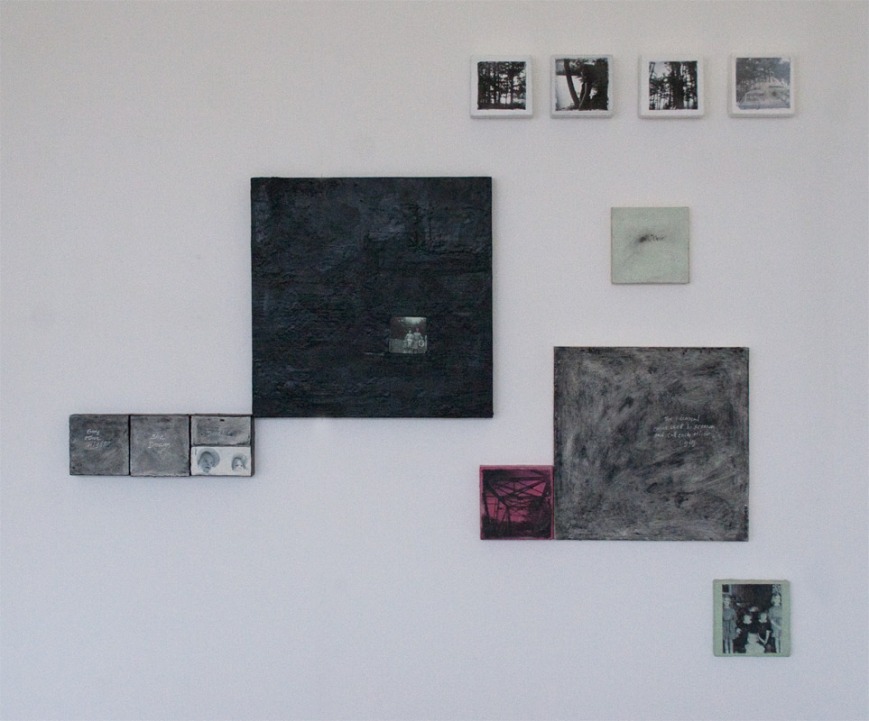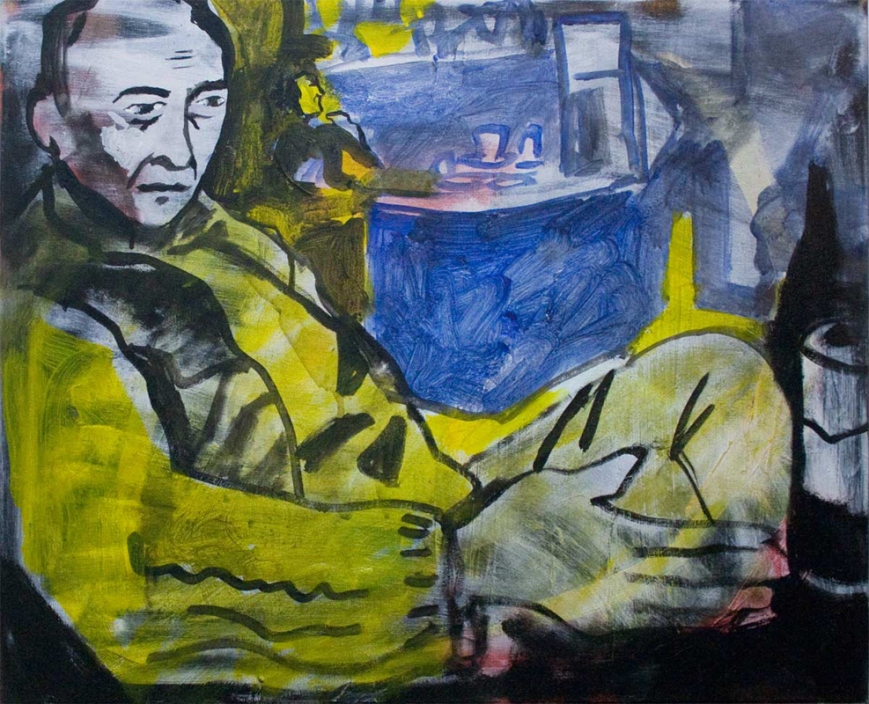Sasha Bowles is one of the artists due to graduate from the fine art masters course in September 2013. Claire Manning finds out more about her work:
CM: What is your starting point?
SB: That depends. For the paintings that deal with the body as a thing, I was deconstructing old masters who use bodies in a fleshy visceral way. Whereas in the paintings dealing with memories, they begin with a personal reminiscence.
CM: The work seems to reference classic, historical paintings? Am I right and, if yes, do they remain true to the particular painting?
SB: Yes, you are. I was interested in the way these classic, historical paintings were purporting to deal with huge themes and yet mostly seemed an excuse to show a lot of flesh. The references are abstracted from particular paintings, but may well become distorted within the painting as it progresses.
CM: In your work, the human body seems to be in a state of transition. For example, in ‘The Heap’, bodies – an excess of bodies – are forcefully present, but are also incomplete. What sort of state are they in – materialising or disappearing?
SB: They are very much discarded. The remains. Remains of bodies and remains of paintings. They are disappearing, left overs, a reference to the discarding of the old classical masters being no longer relevant, but also to how we treat both the living and the dead body in a disposable / replaceable manner.
CM: ‘The Heap’ is grouped under a series of work you’ve called the body problem. Tell me more about the nature of this problem of the body.
SB: I have been exploring the ‘mind-body’ conundrum. And trying to separate the body from the mind; to view it as just a thing, which is how it is often portrayed throughout history. I have been investigating the biological properties; the physical ‘stuff’ we are made of. How we view our own bodies; from within and without. What happens after we die; including autopsies and embalming. Our relationship to other bodies; including that of serial killers.
CM: Some brush strokes feel precise and careful and others less restrained. What role does planning and chance play in your painting techniques?
SB: They are process paintings, so although there is an idea that begins the painting and will remain at its core, the painting will ‘reveal’ itself in the process of making. I really enjoy creating different areas of interest over the canvas. There are areas of both clarity and vagueness, which is kind of how my thoughts are forming as I paint. I am hoping to ‘surprise’ myself in the painting and so am very aware of the possibilities of ‘chance’ moments and how they may open up a painting. So in answer to the question; there is a plan of sorts, but I like to go off the path to see where that may lead.
CM: I’ve seen you work large and also quite small. What factors determine the size of a piece?
SB: I guess it depends upon the intimacy of the piece I am creating. How gestural I am wanting to be and what sort of impact I am hoping to achieve. ‘The Heap’ is large, because I wanted the physical bodily experience of making it to be evident within the work.
CM: Naming work seems a universal difficulty for artists. In the series of work called ‘Memory and slippage’, your titles are quite lyrical & emotive – such as ‘As our memories fade souvenirs appear’, and ‘A slippage of time and place’. Tell me more about how you choose titles.
SB: I wanted the titles to be evocative without being too descriptive. Allowing the viewer an ‘in’ to the painting, but not giving it all away.
CM: Do you always work in paint?
SB: Not at all. No I also work in 3-D and photography. I am becoming more and more interested in the crossing over of disciplines and am very open to where that might lead me.
CM: The next 3 months leading up to the graduation show are likely to be intense. What are you most looking forward to?
SB: Consolidating ideas. There has been a huge amount of exploration and experimentation these last two years. So I am excited and nervous to see if it will all come together and in what form.
Sasha Bowles photographic work can currently be seen at the Charlie Dutton Gallery Photo&Print open salon, PV tonight then open to the public from 30th May to 29th June.
Sasha’s website



